During summer vacation we spent a day with our great friends, Tim & Cindy, touring around Renfrew county. Both Tim and I were born in Renfrew County so it was great to spend a day on the old stomping grounds. Renfrew County is Ontario’s largest county so there is much to see and plenty to do, certainly more than what can be packed into one day.
Food stops were a delight with ice cream at Brumm’s Dairy in Pembroke then off to Eganville for fries at the Jolly Fryer and latte’s and espresso at Engine House Coffee. How can you beat fries, ice cream and coffee?
From a photographic perspective the highlight of the day was capturing the Bonnechere Caves and the Bonnechere River which rages through the area providing incredible rapids and waterfalls to photograph.
Although the Bonnechere Caves have been there a lot longer, they have been open to the public since 1955 when Tom and Ruth Woodward purchased the land and explored and developed them for public access. Check out their website via this link if you want to learn more about the caves and their history.
The atmosphere at the caves is laid back and welcoming. Tours leave from the parking lot every half hour and they operate daily from Victoria Day to Thanksgiving. Our tour guide was excellent with a perfect blend of history, education, story telling and lots of humour. It was excellent and brought back fond memories from when I last visited the caves 45 years ago.
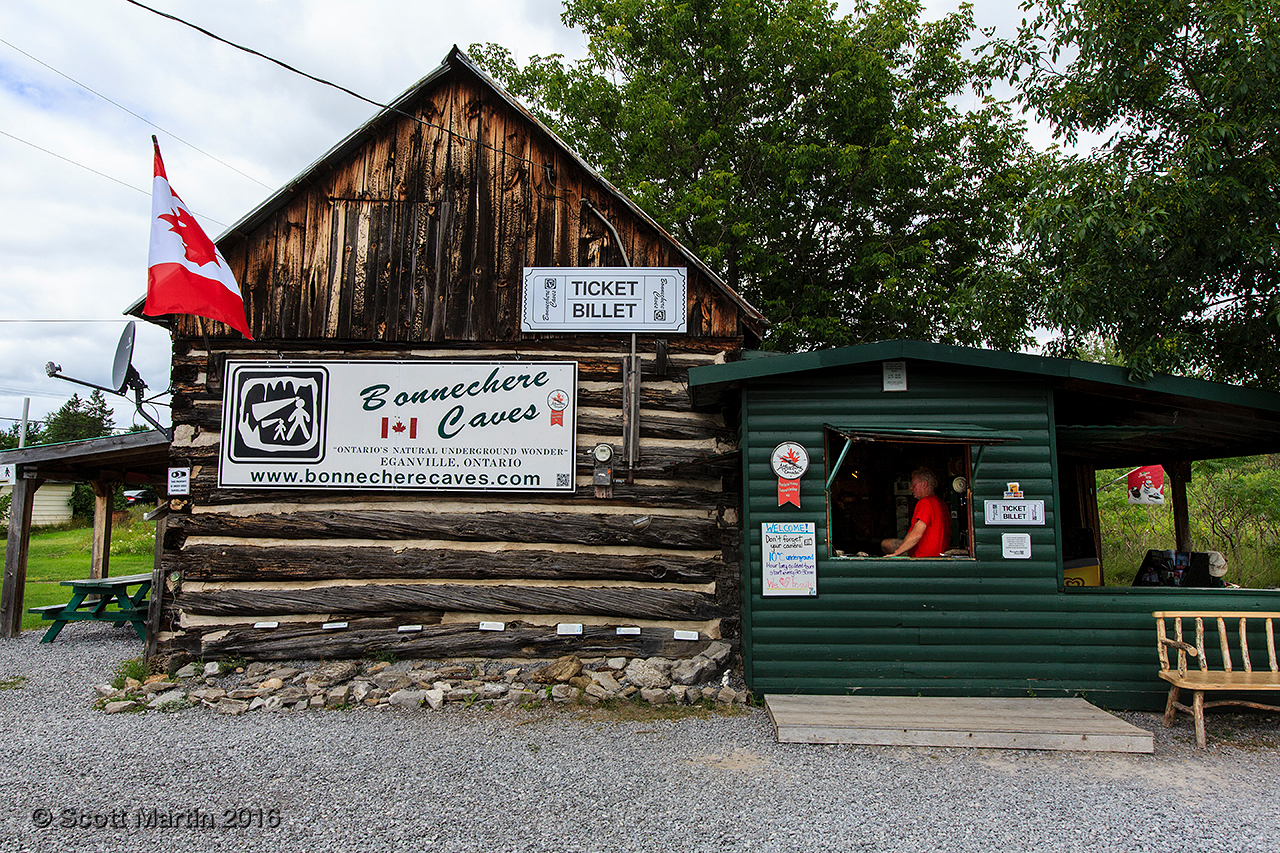
Our group being introduced to samples of the many fossils that are found in the area.
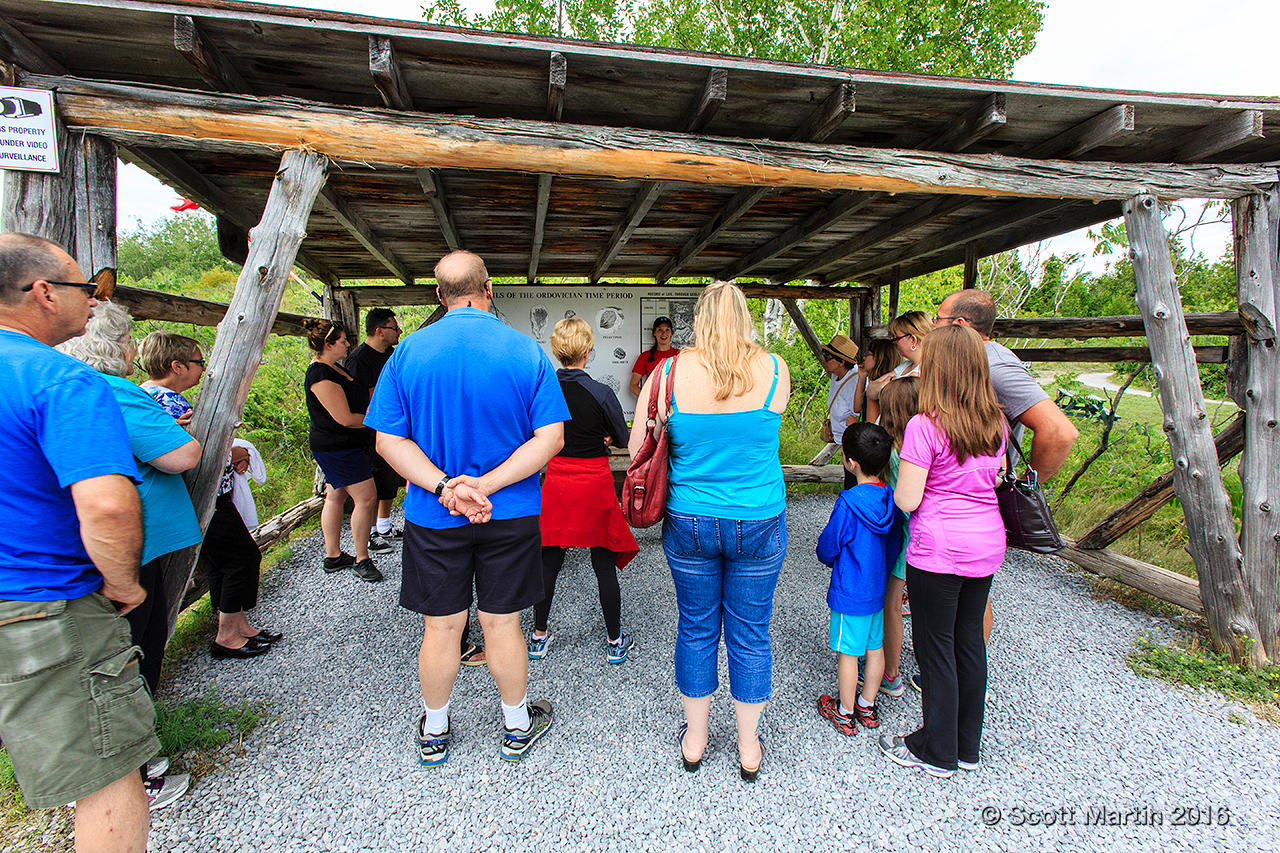
This is the stalactite formation known as the beehive, for obvious reasons!
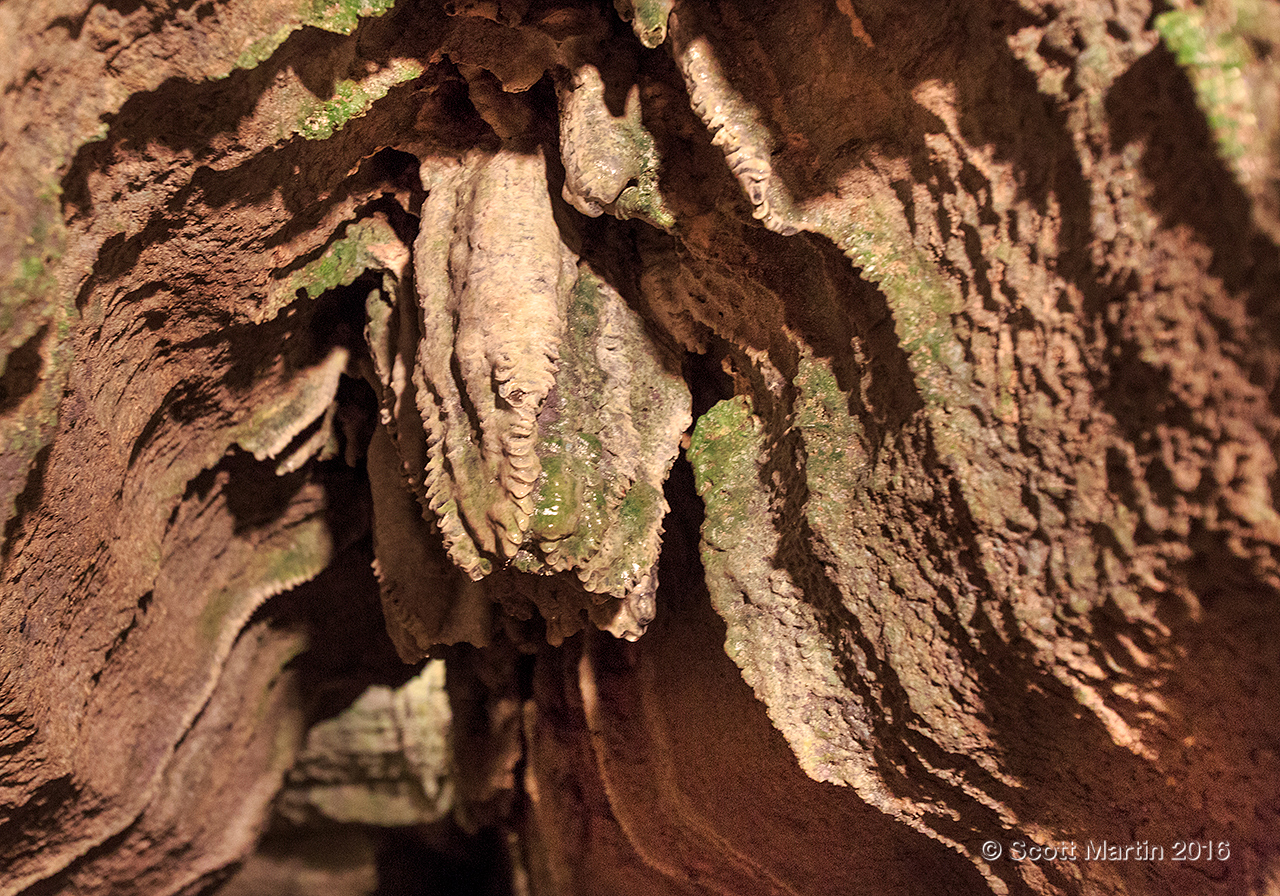
These next images show various views of the caves as we proceeded through on our tour. I was thankful they allowed me to take a tripod and take as many images as desired. Most of the pictures in the caves were taken at a fairly high ISO with shutter speeds ranging from three to five seconds.
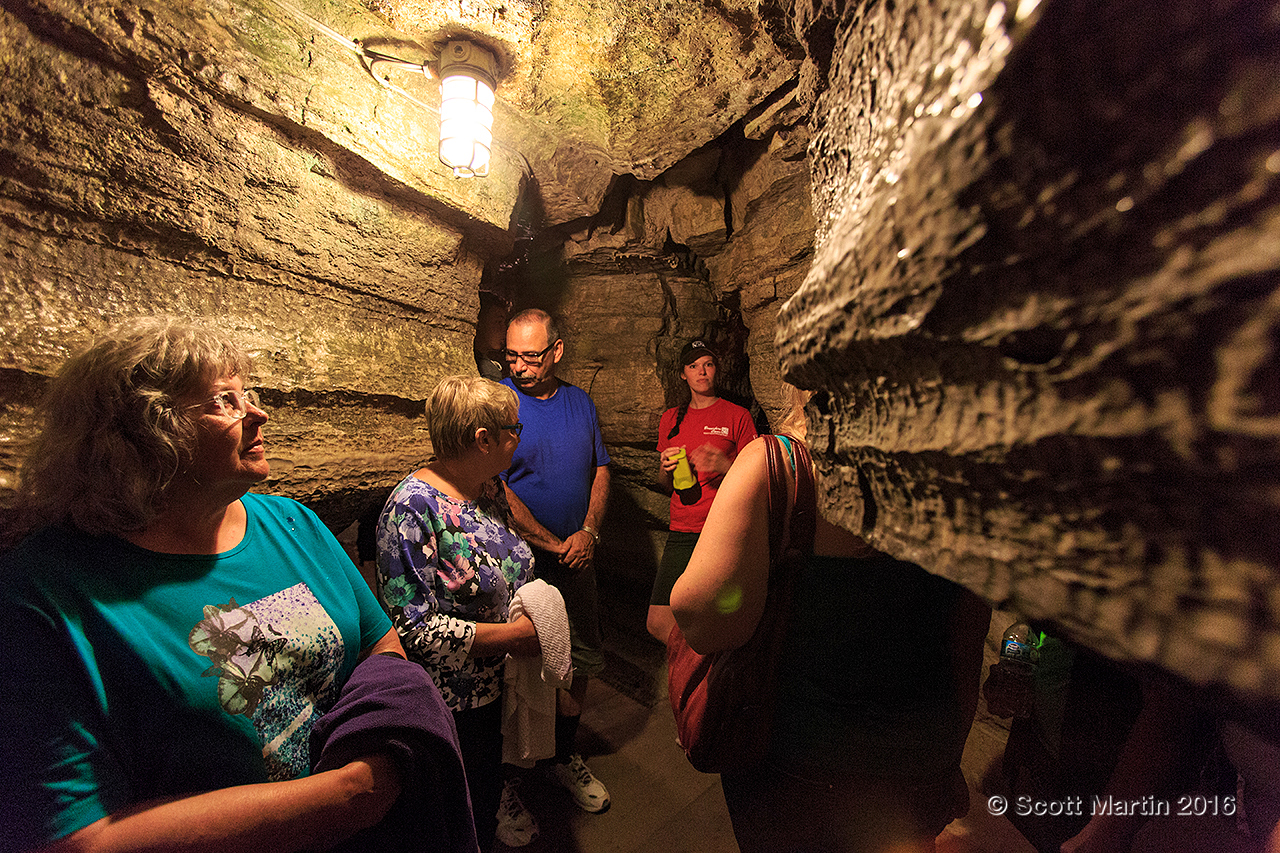
.
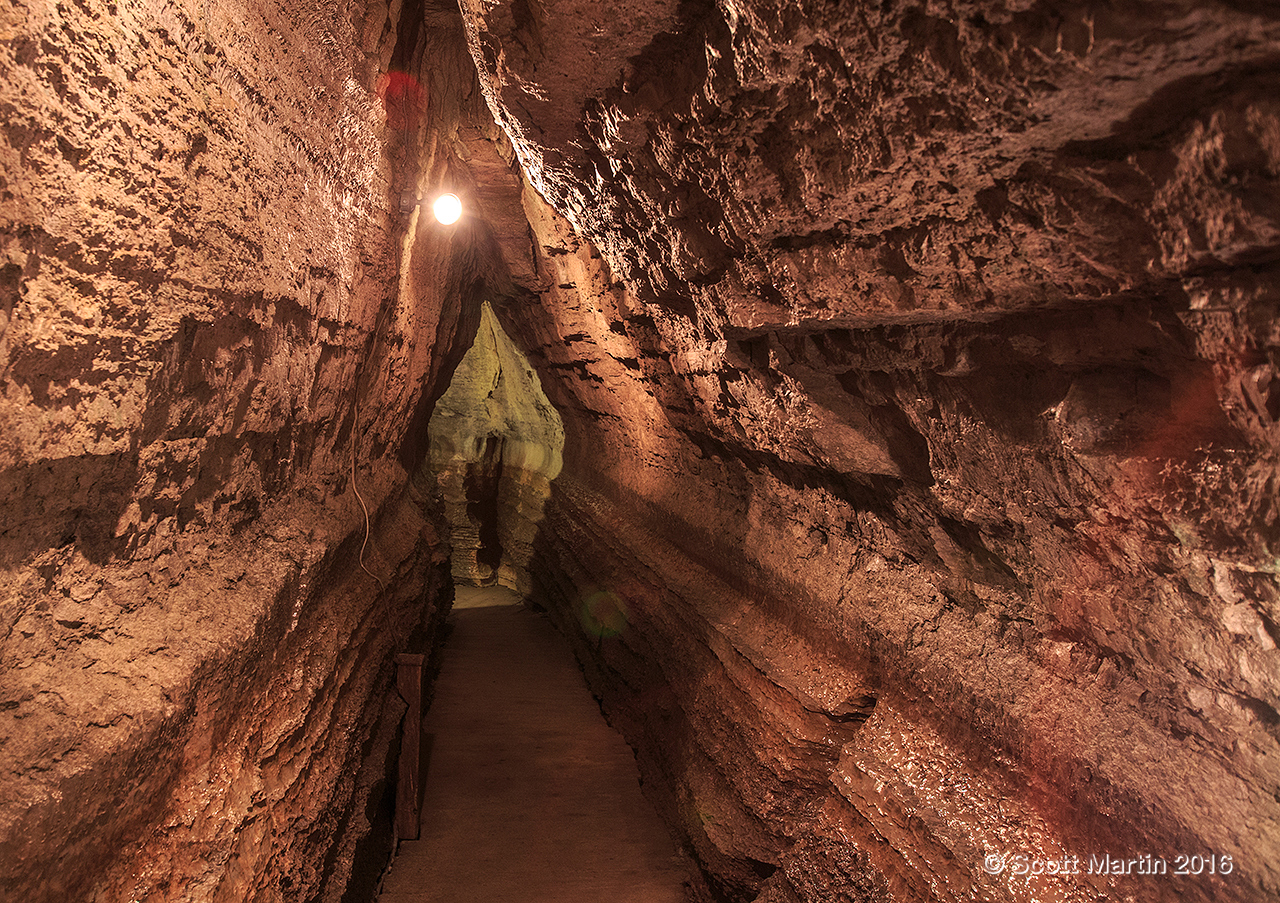
.
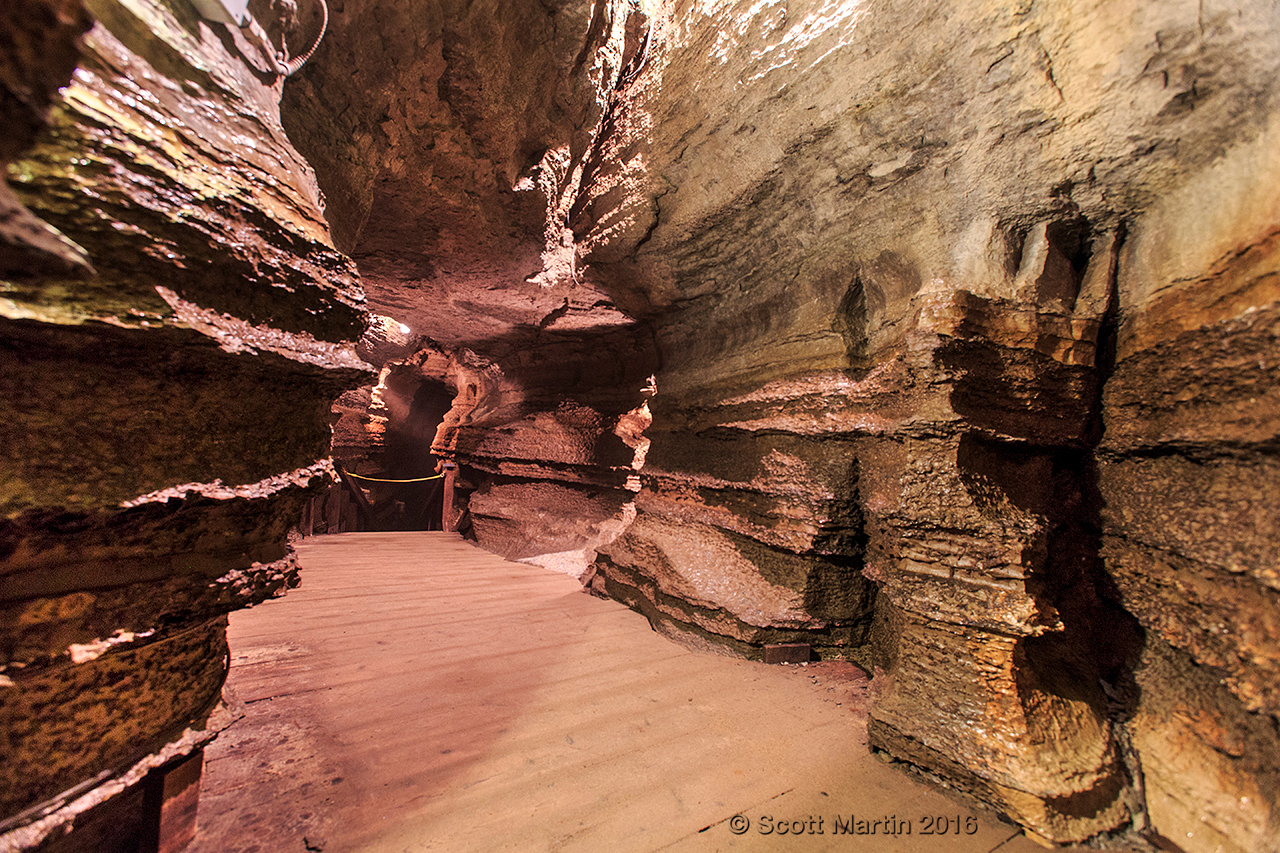
.
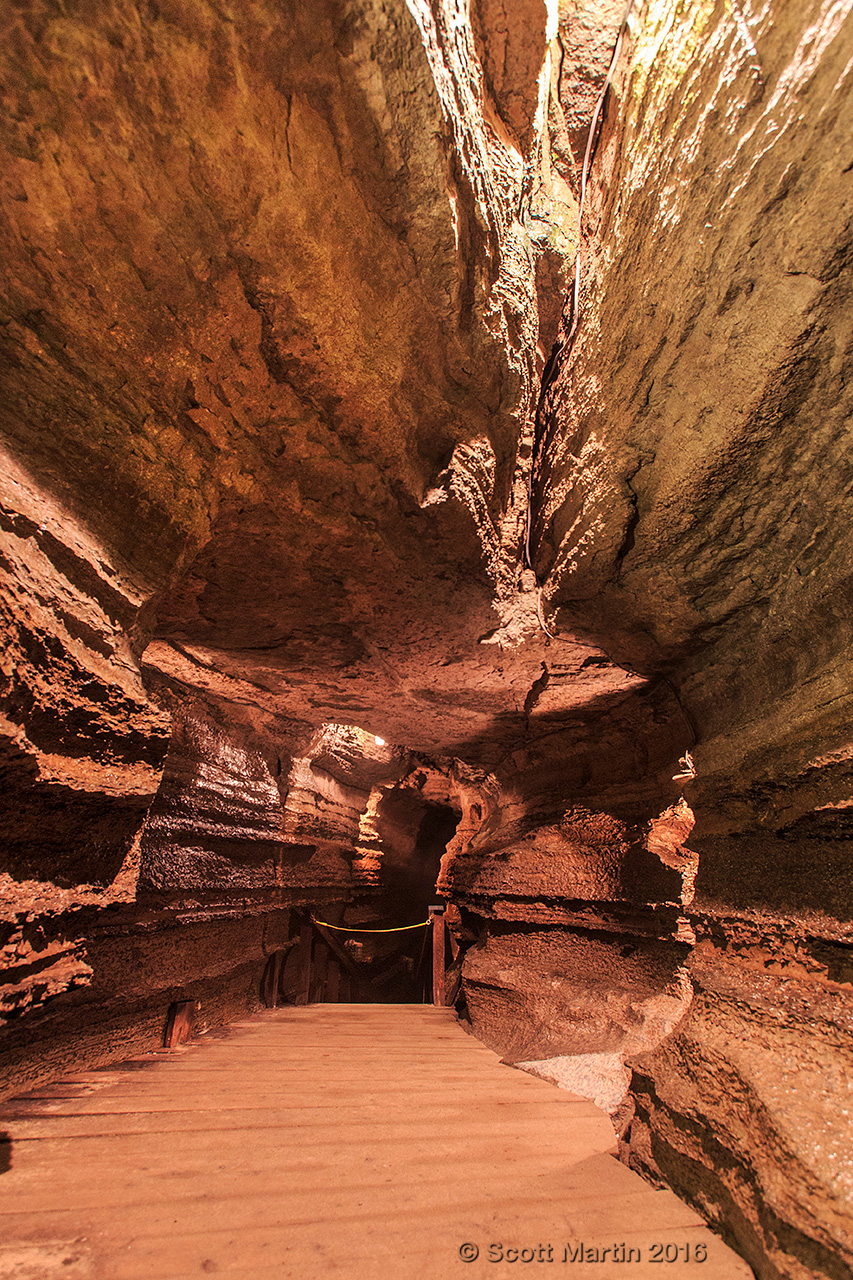
.
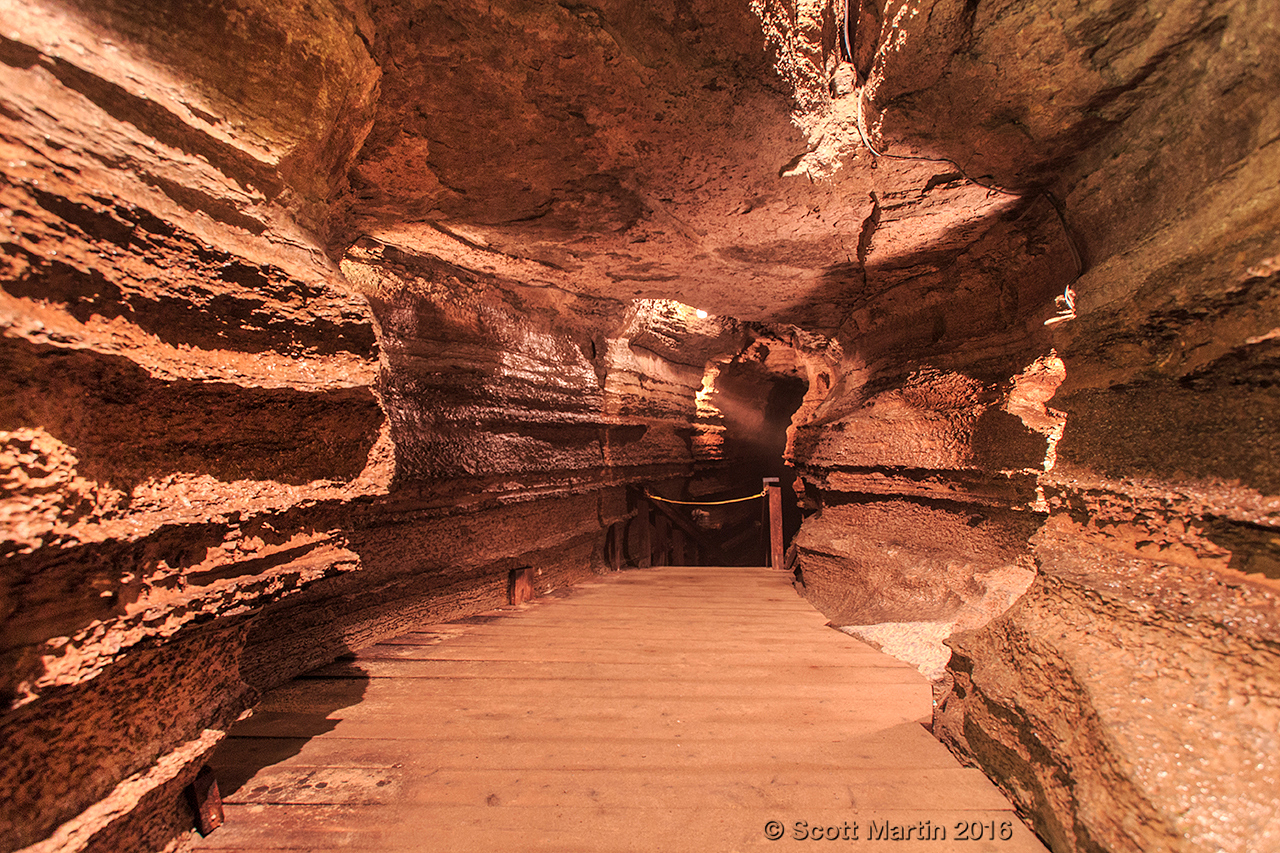
.
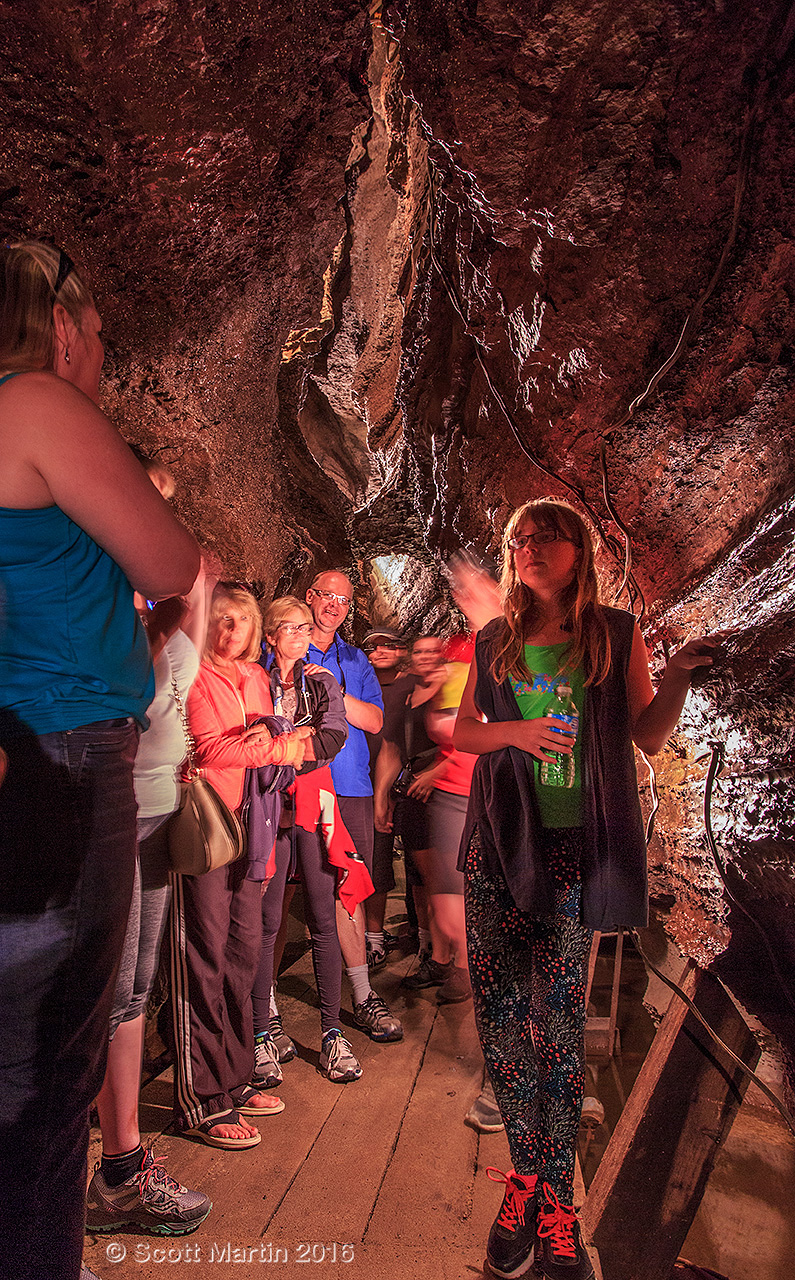
This last shot of the caves shows an area that suffered a collapse….fortunately this was at the end of the tour. As an introduction it would have been unnerving 🙂
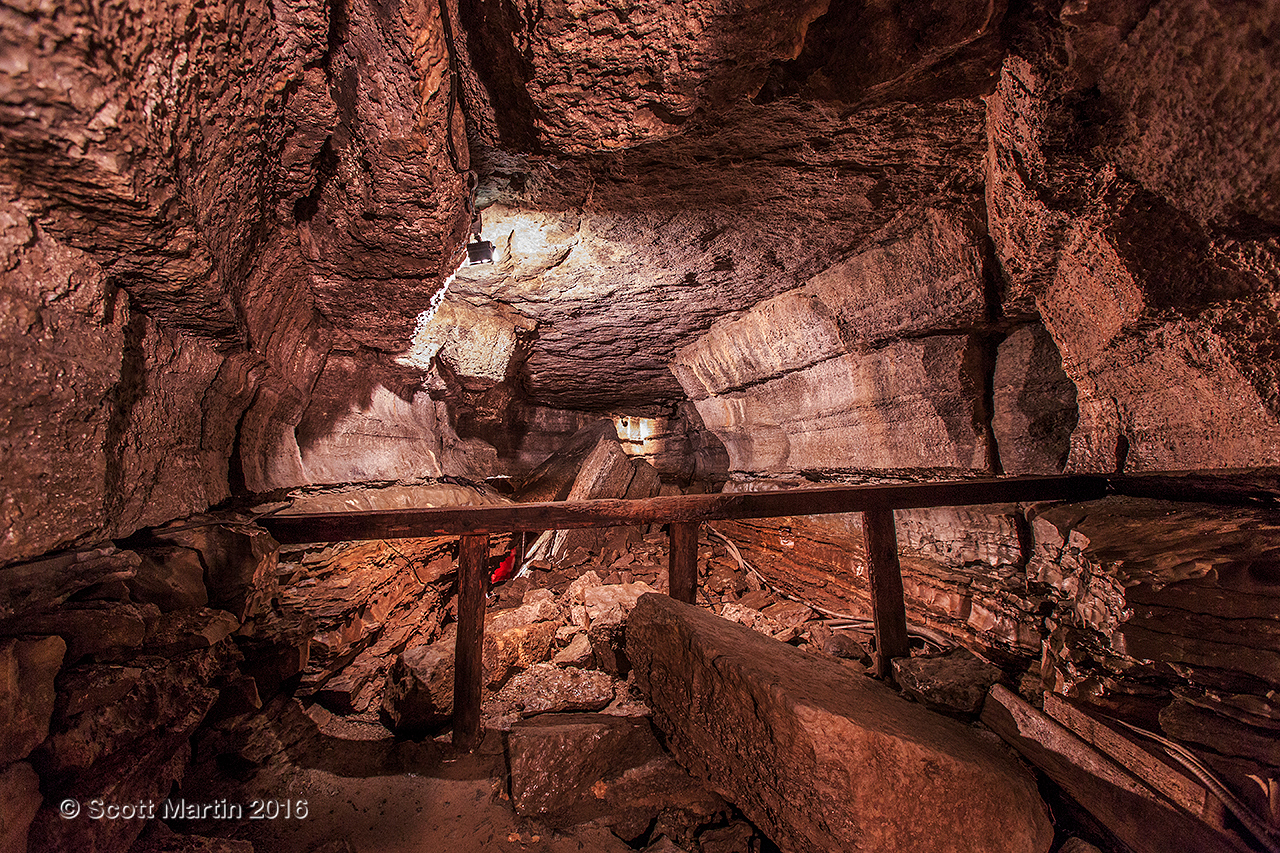
After touring the caves we crossed the bridge to the opposite side of the Bonnechere River and made the short hike to the river’s edge and rushing waters that awaited.
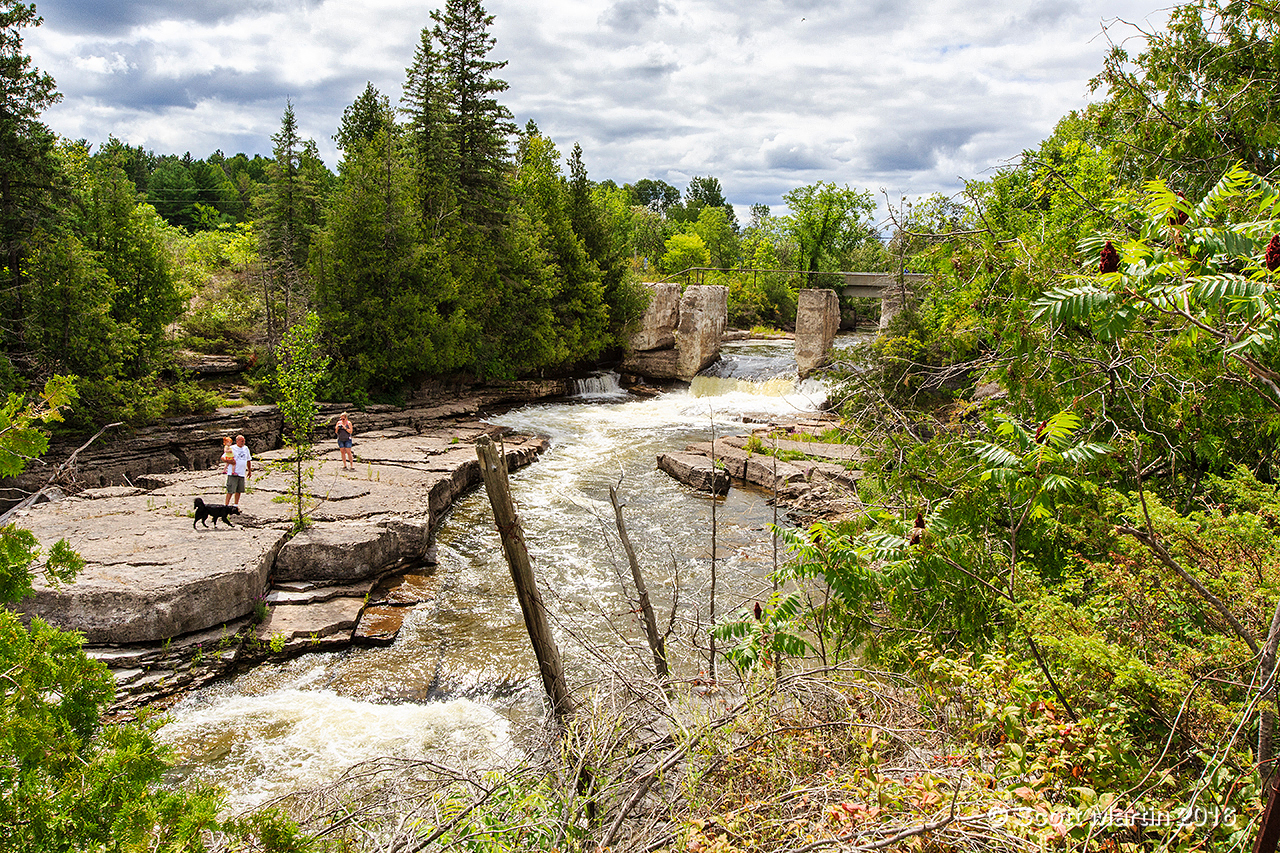
Even the hike to the river was enjoyable with many interesting formations in the relatively soft limestone formed by the Bonnechere River when water levels were much higher.
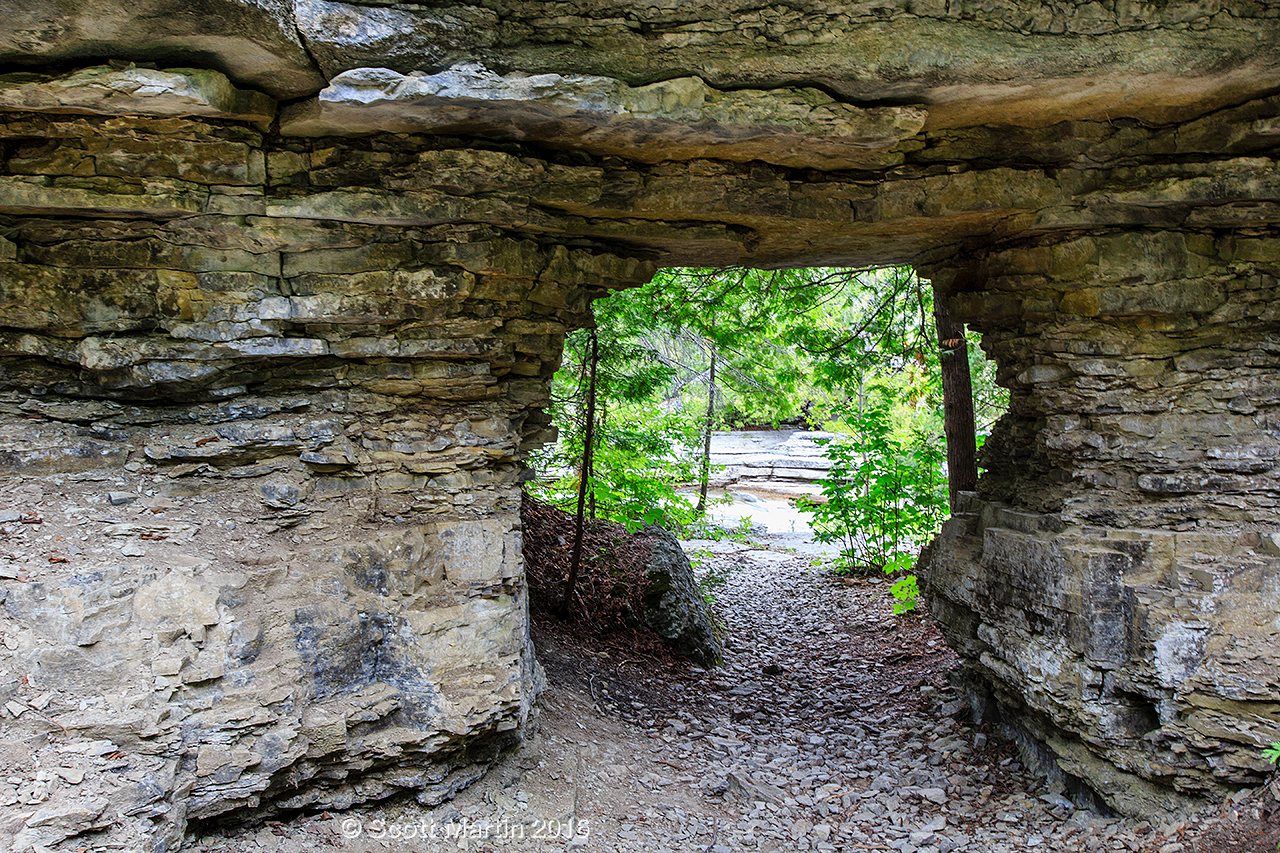
When photographing rivers, rapids and waterfalls, shutter speed is the factor that has the most influence on the image. It is shutter speed that will determine whether the water movement is stopped with perfect focus, freezing the action of the water perfectly, or creates an image in which the water appears etherial with smooth white waters flowing over the rocks beneath conveying the motion and power of the flowing water.
As a matter of practice, first determine the composition you desire and position the tripod accordingly; secondly determine the aperture required to create the necessary depth of field (generally a smaller aperture is preferred in order to keep all elements in focus – anywhere from f/11 to f/22 is usually fine, especially when using wide angle lenses). Finally choose a shutter speed that creates the amount of motion you wish in the water. This is often a matter of trial and error until the proper exposure time to create the desired effect is achieved.
In this next series of images we will look at the effect shutter speed has on the moving water. Everyone’s favourite image will be different based on their subjective preferences and I’d be interested in knowing your choice. Leave a comment with your preference and we will see if there is a clear winner or whether the variety of choice is large. Remember the shutter speed of your favourite and use that speed as a starting point the next time you are photographing rushing waters.
A. 1/100 second
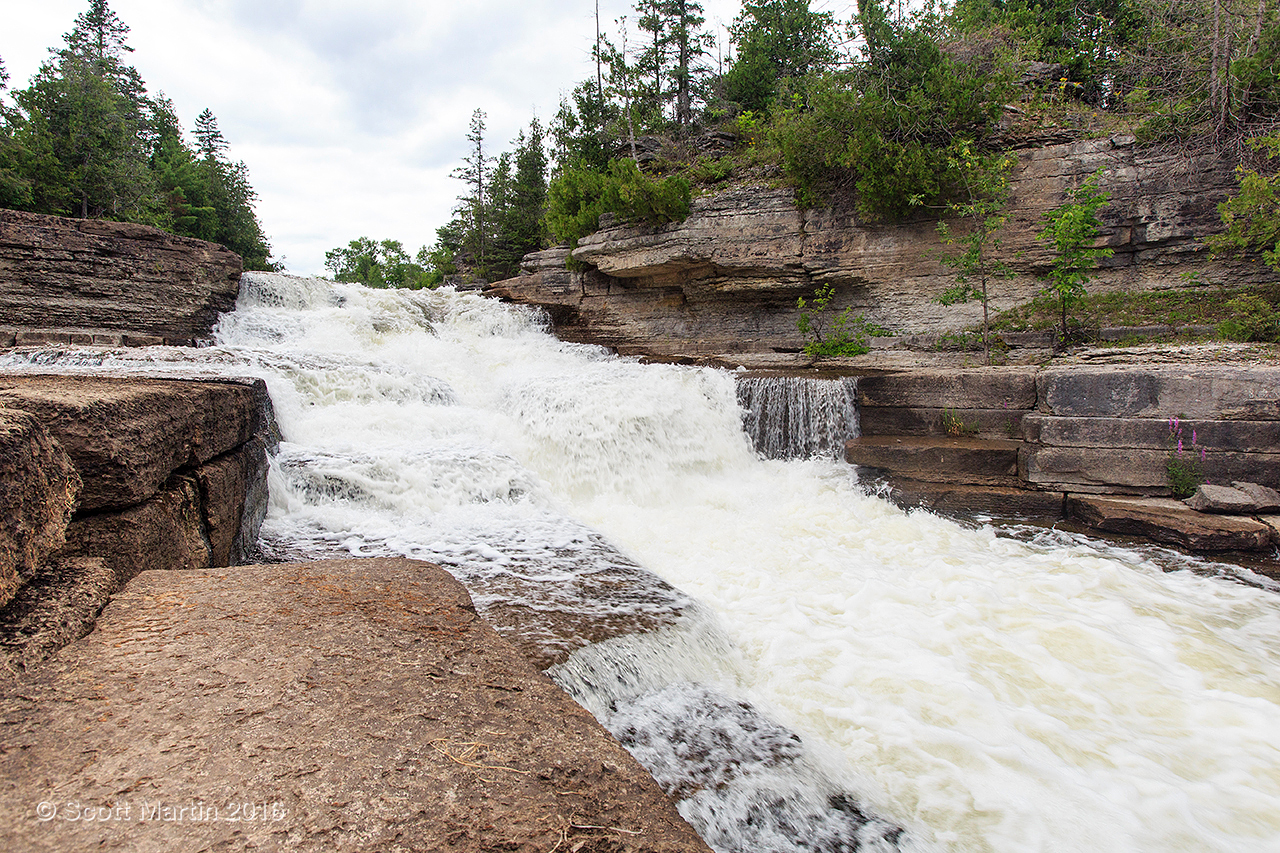
B. 1/2 second
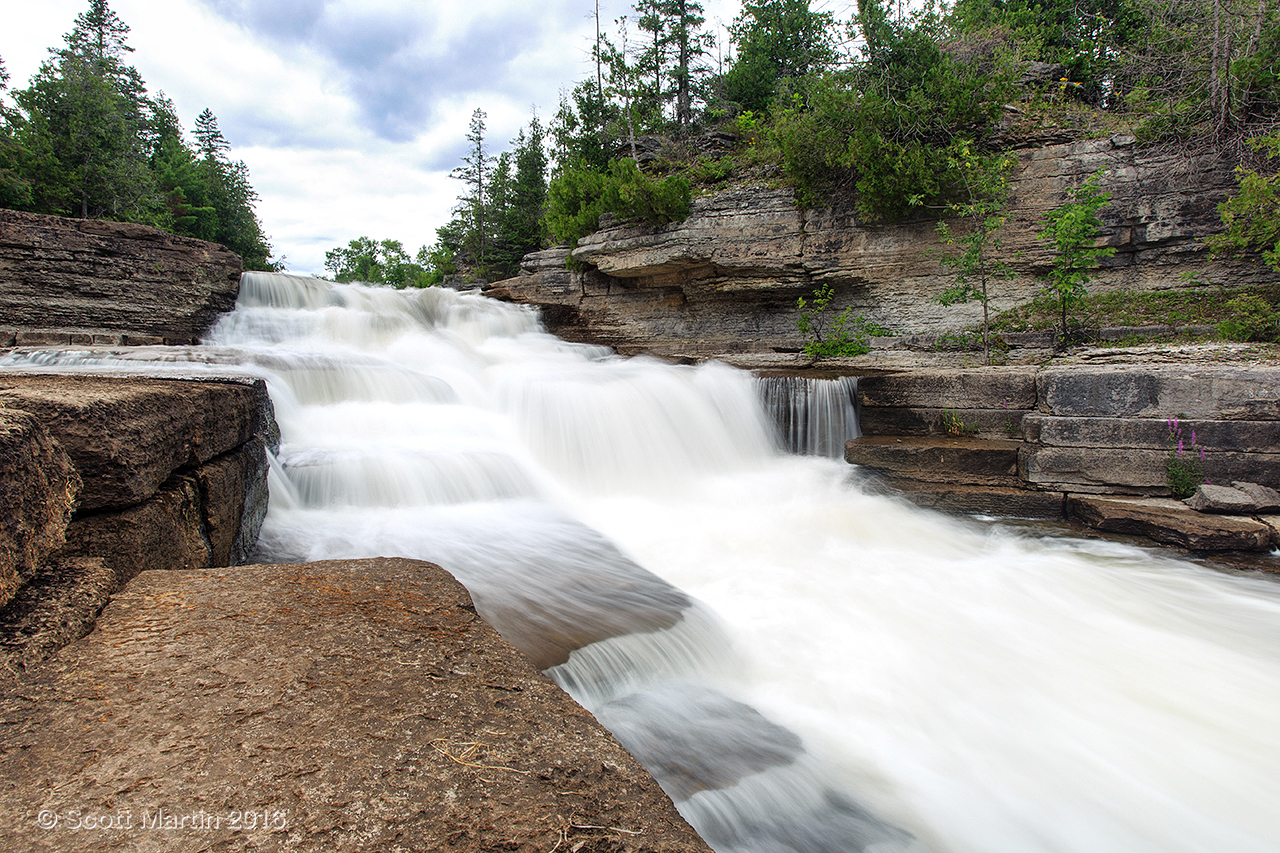
C. 2 seconds
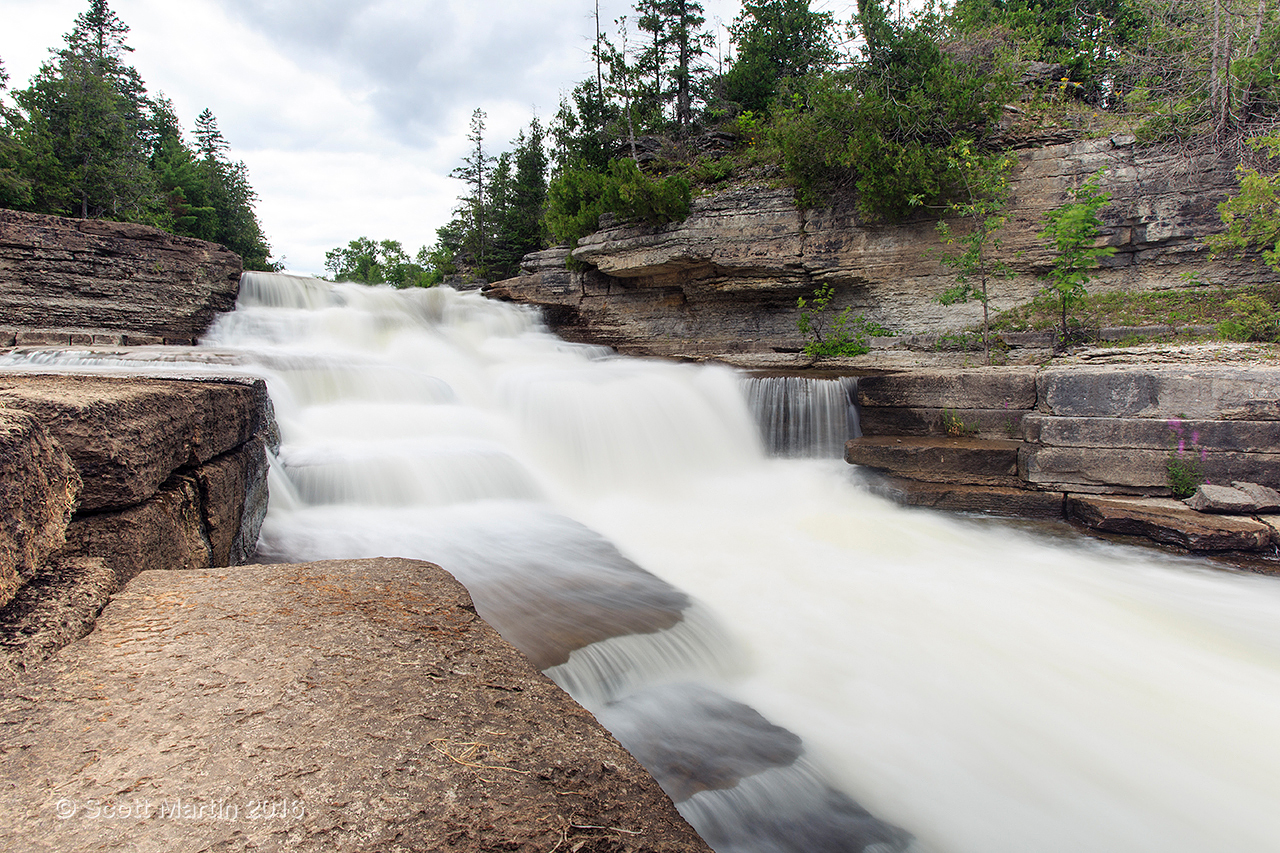
D. 4 seconds
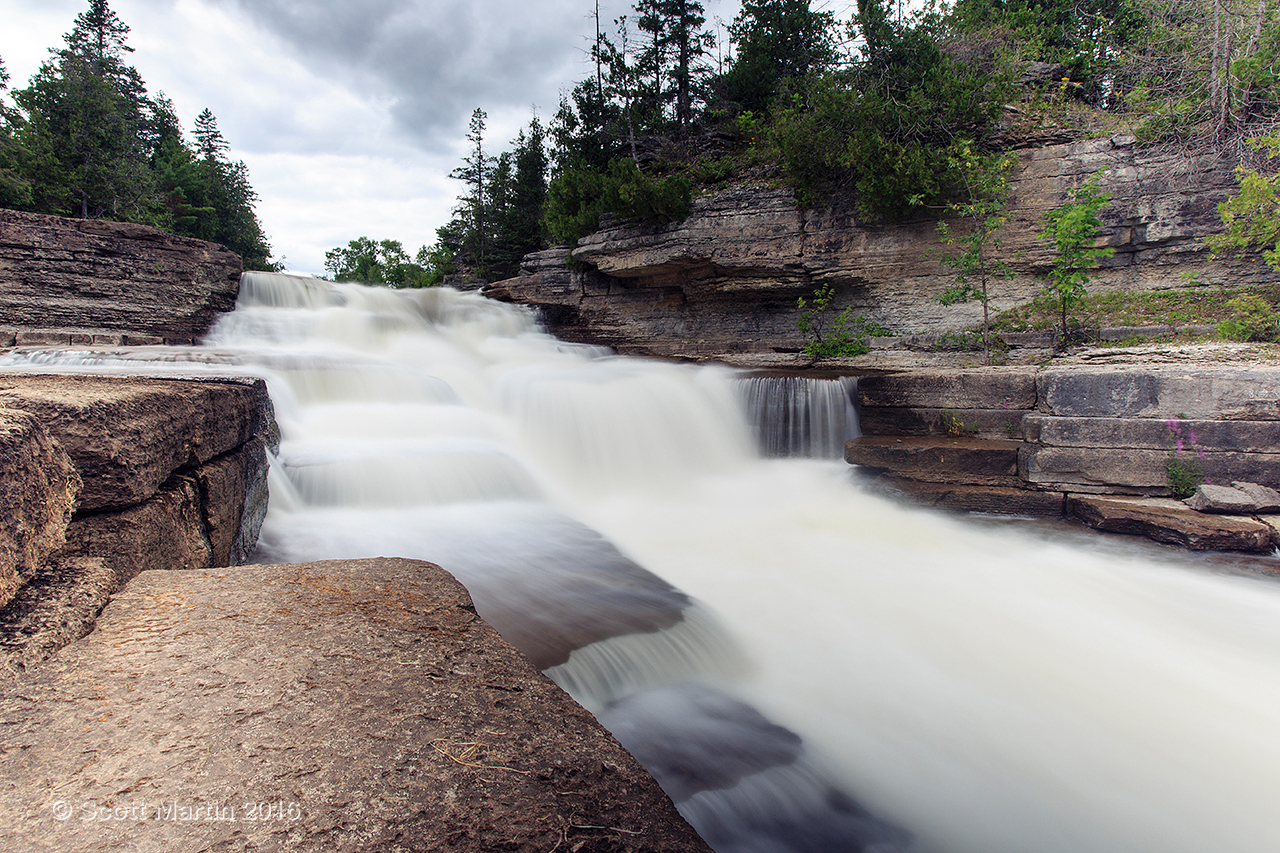
Although there was a cloudy sky when these images were taken, you may be wondering how we were able to achieve such slow shutter speeds. During the daylight even with an aperture of f/22 and an ISO of 50 you can not typically get to exposures of much more than 1/4 to 1/2 second. To achieve slower shutter speeds you require filters for the lens that reduce the light entering the lens. If you have a polarizing filter, you can use that to gain about 1.5 more stops. Otherwise you require Neutral Density filters to further reduce the light reaching the sensor. Neutral density filters come in many forms and are found in every landscape photographer’s tool box. For the pictures in this post I used a Singh-Ray Vari ND filter which is a great filter that allows you to vary the amount of light reduction from 2 to 8 stops which is extremely helpful.
We will close today’s blog with a few more shots of the Bonnechere River. I will include some similar scenes at different shutter speeds for your critique which I always appreciate.
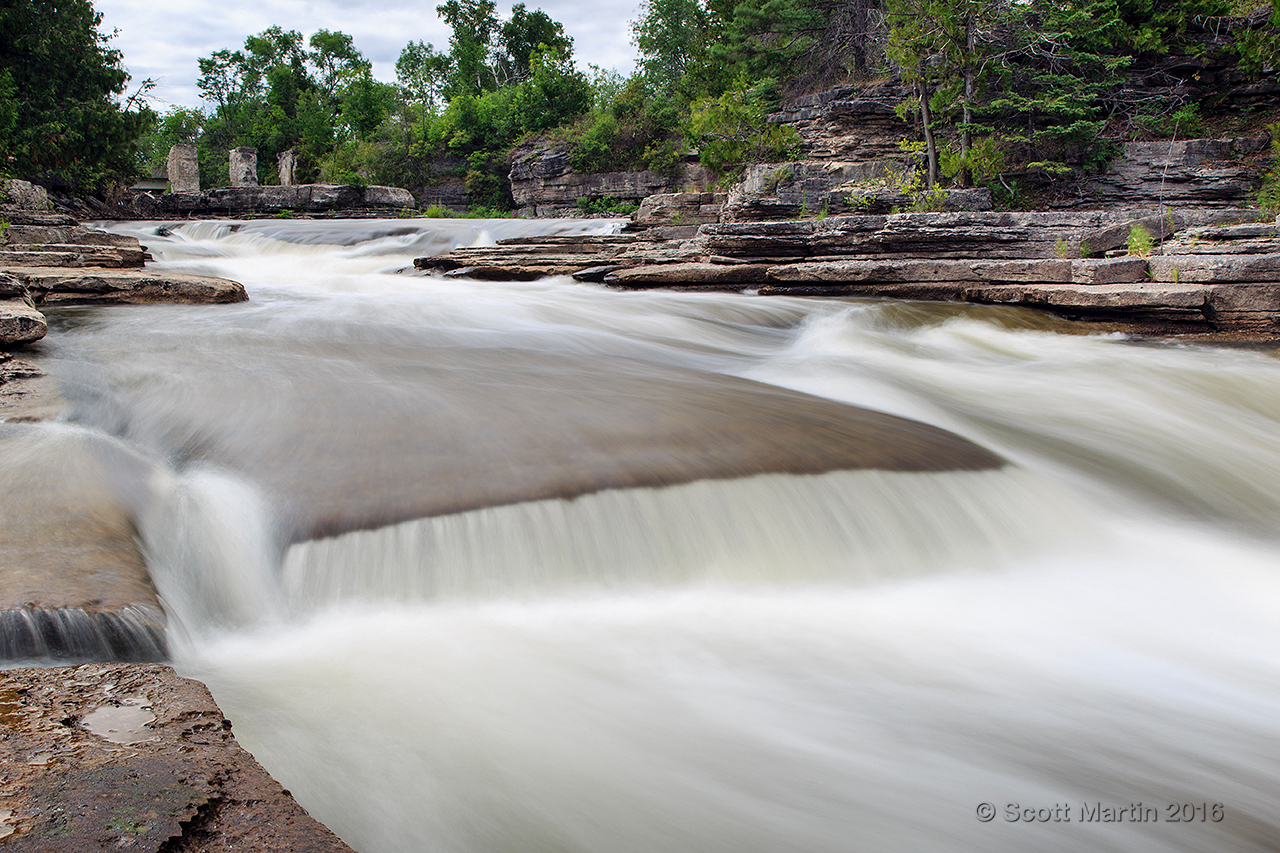
For long exposure shots including people, ask them to hold as still as possible and always use a flash to help freeze any motion (I used a +3 flash exposure compensation for this pic).
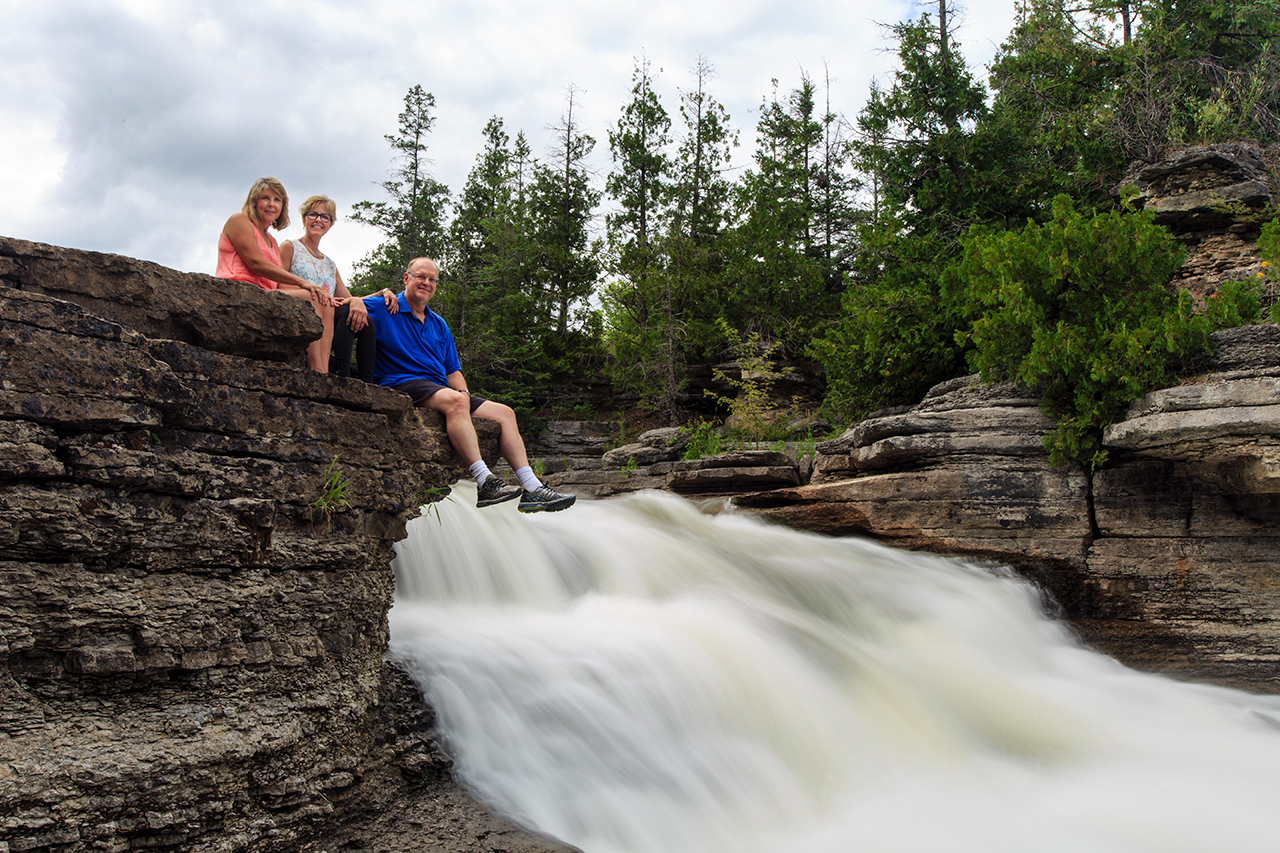
.
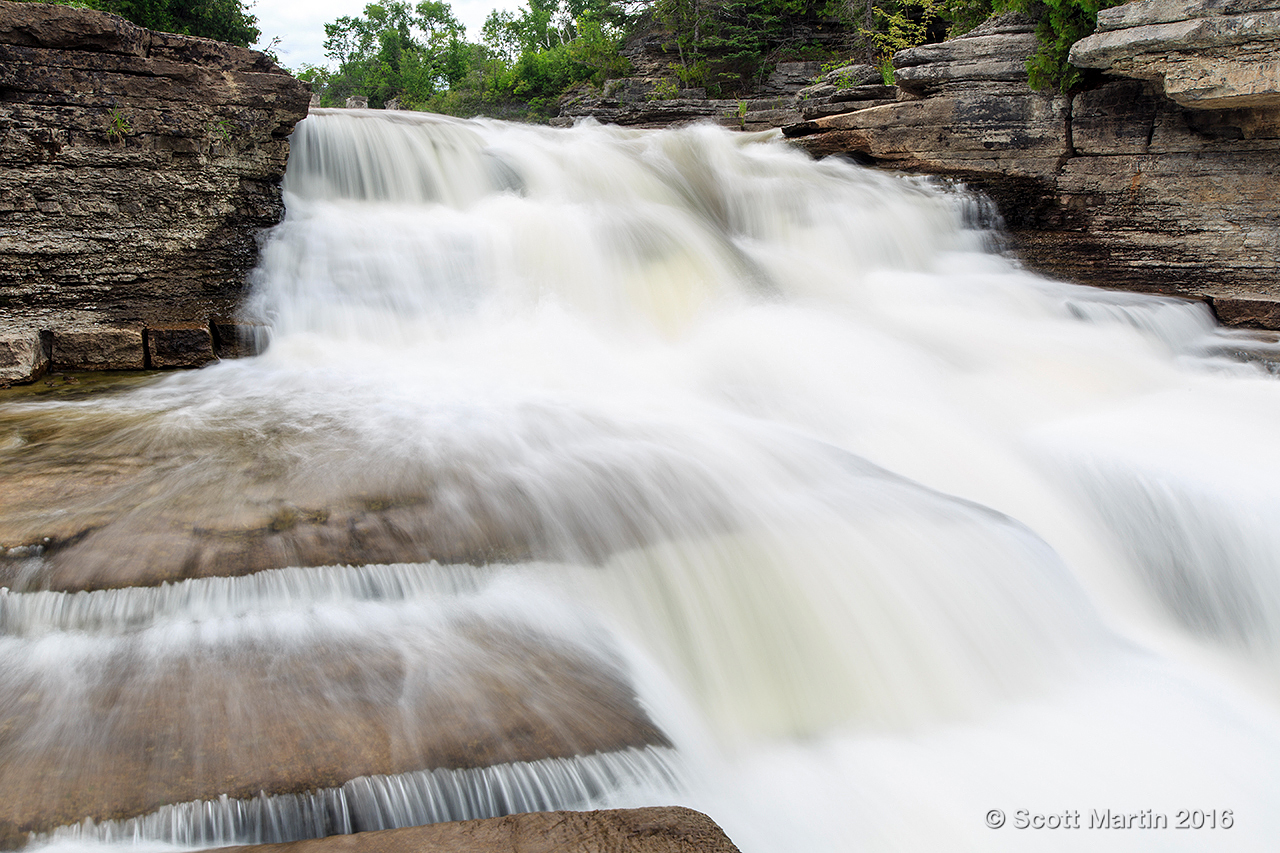
.
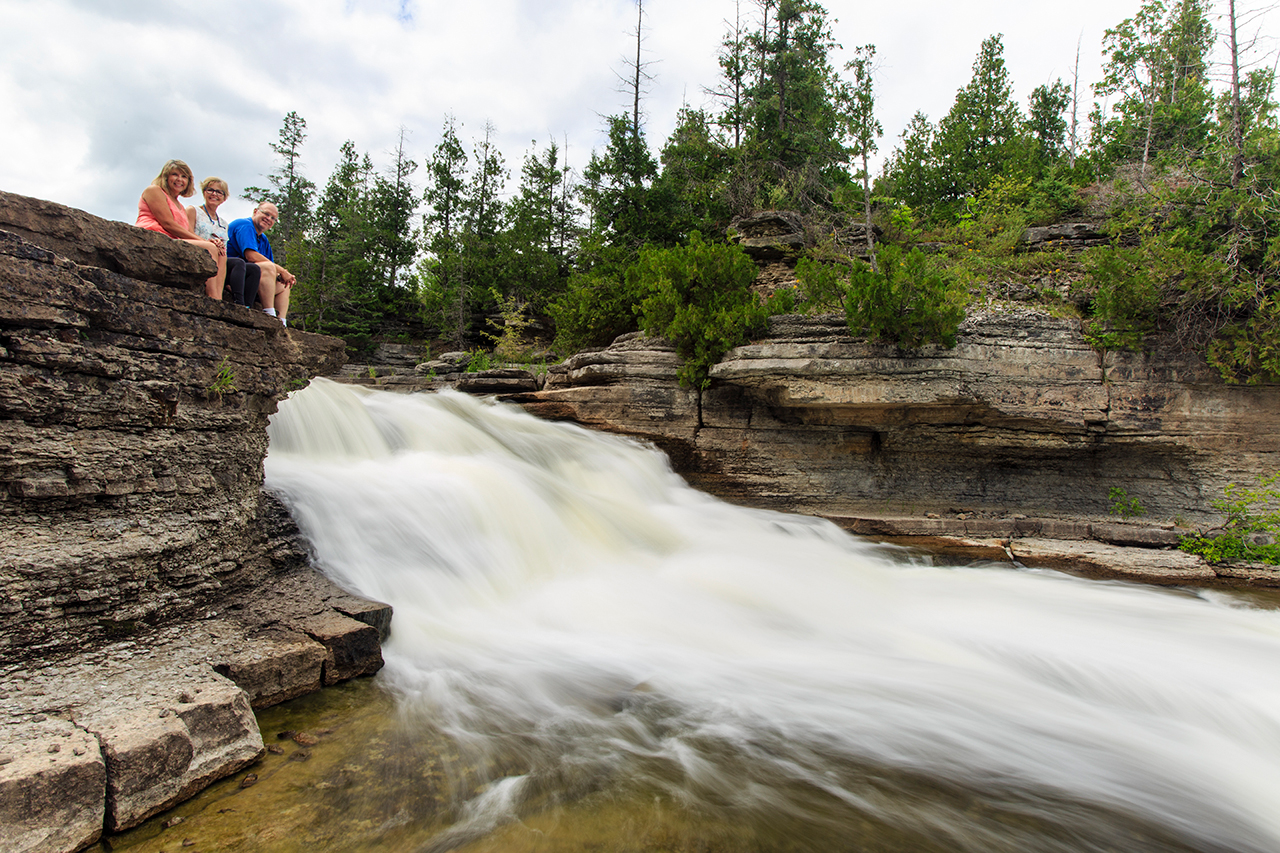
.
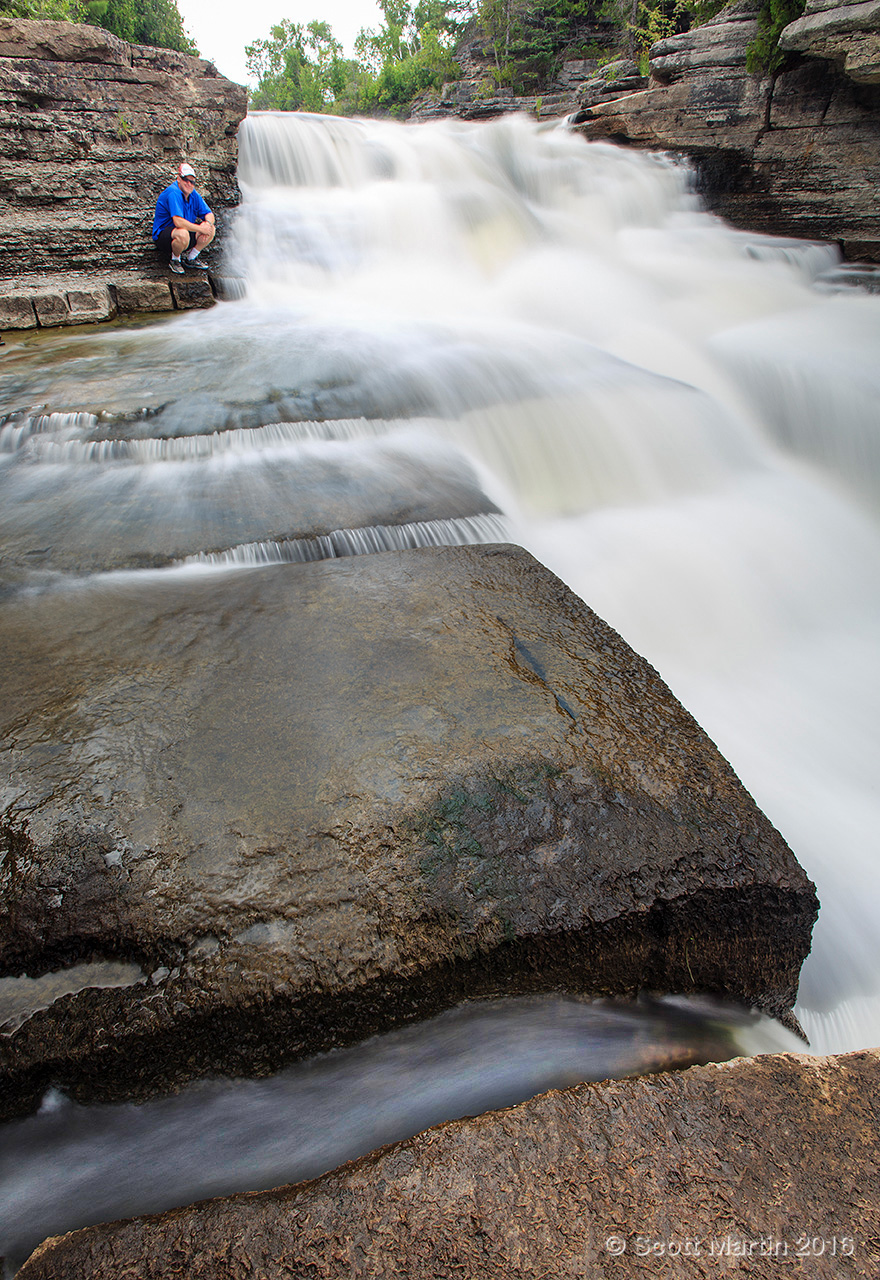
.
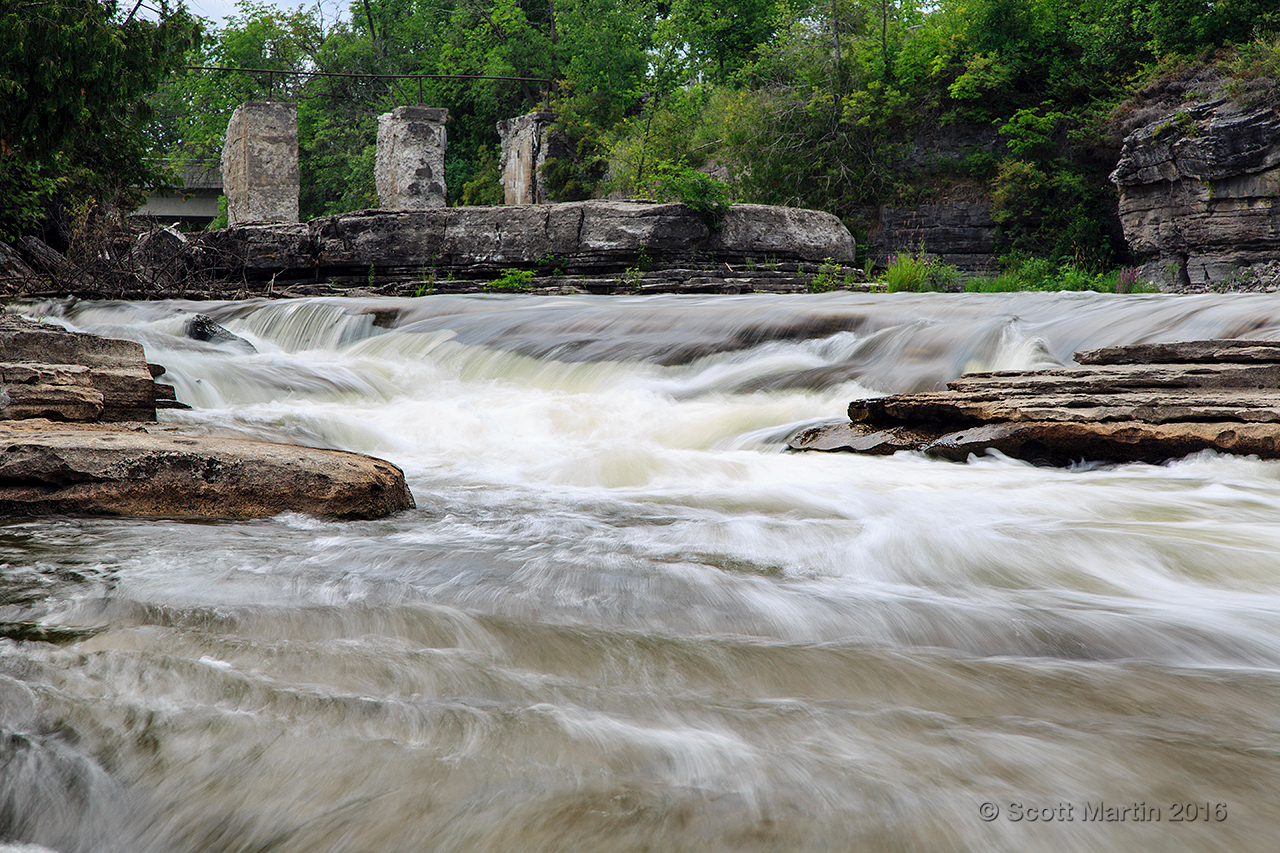
.
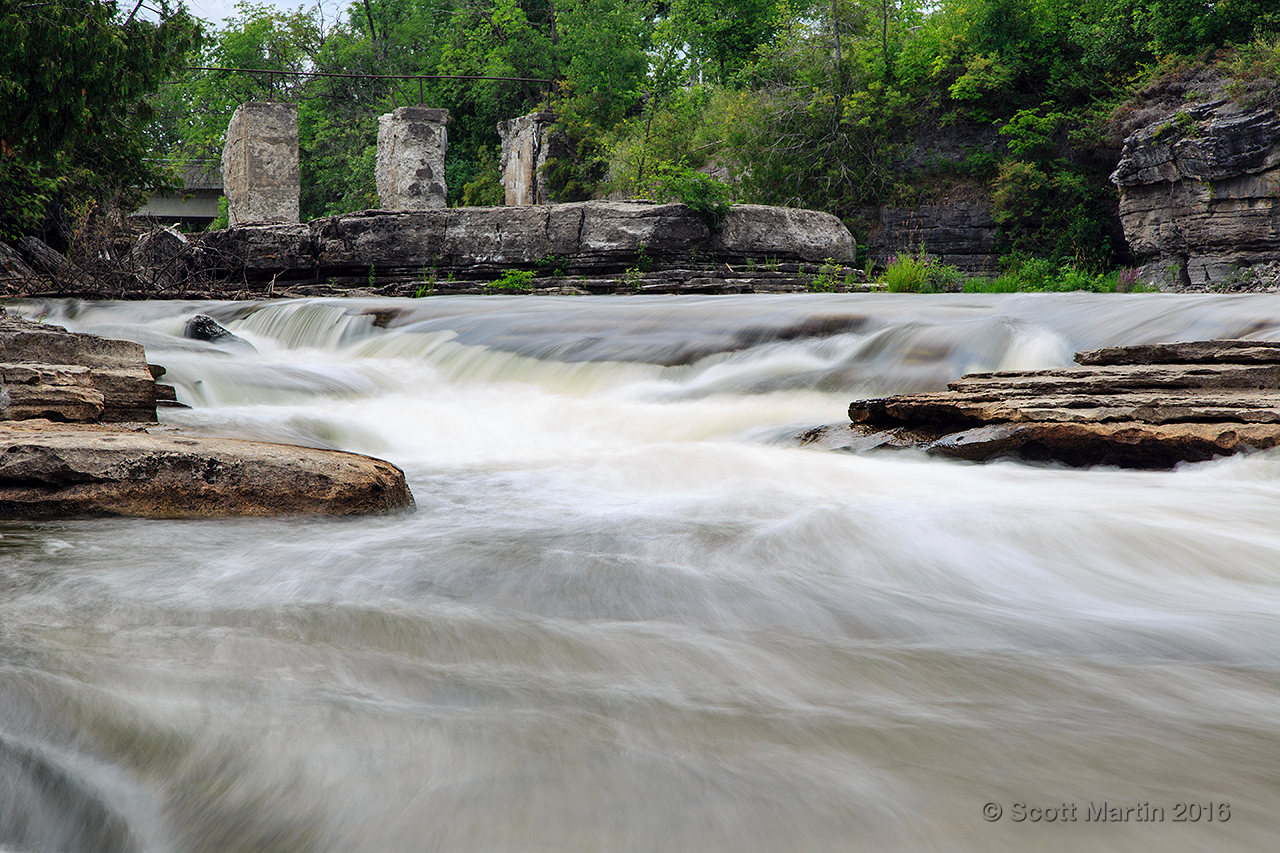
1/3 second
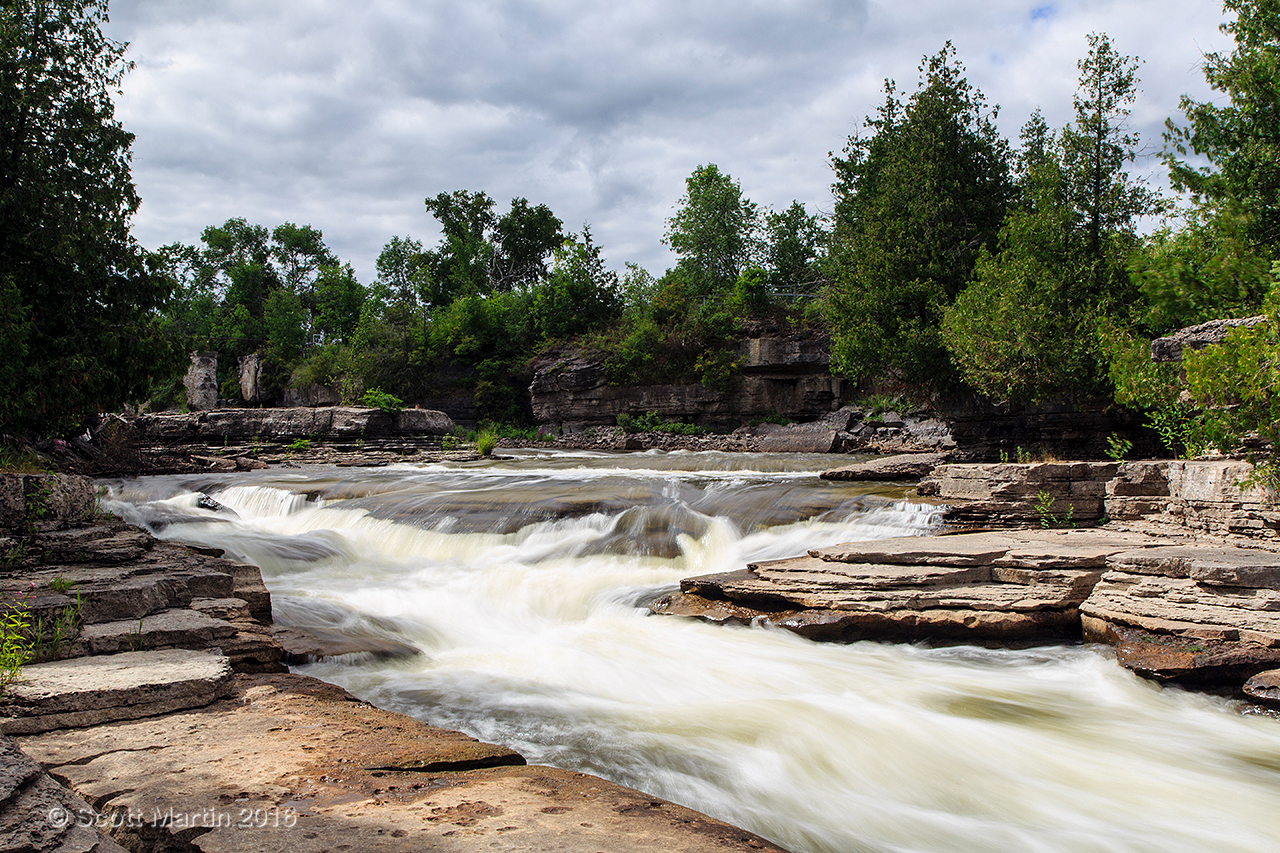
1 second
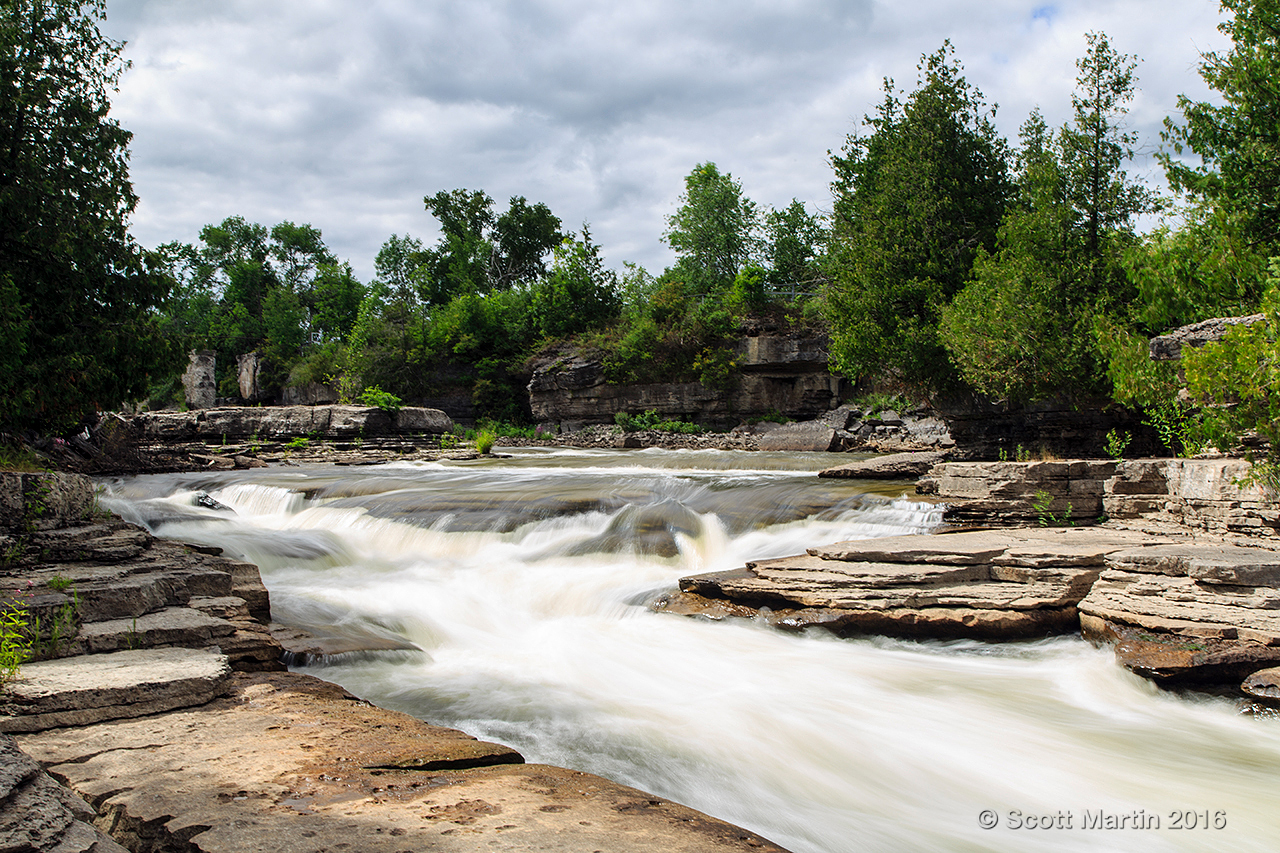
5 seconds
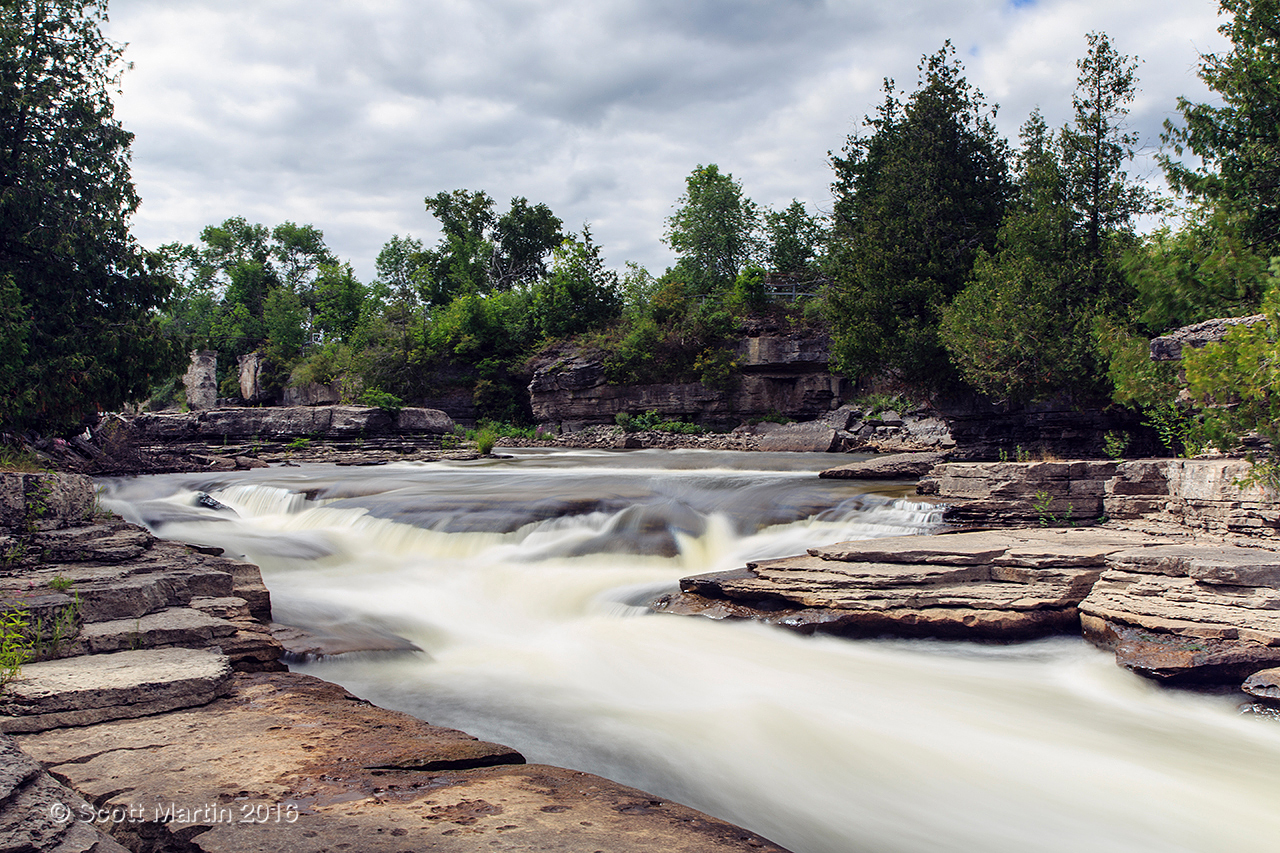
10 seconds
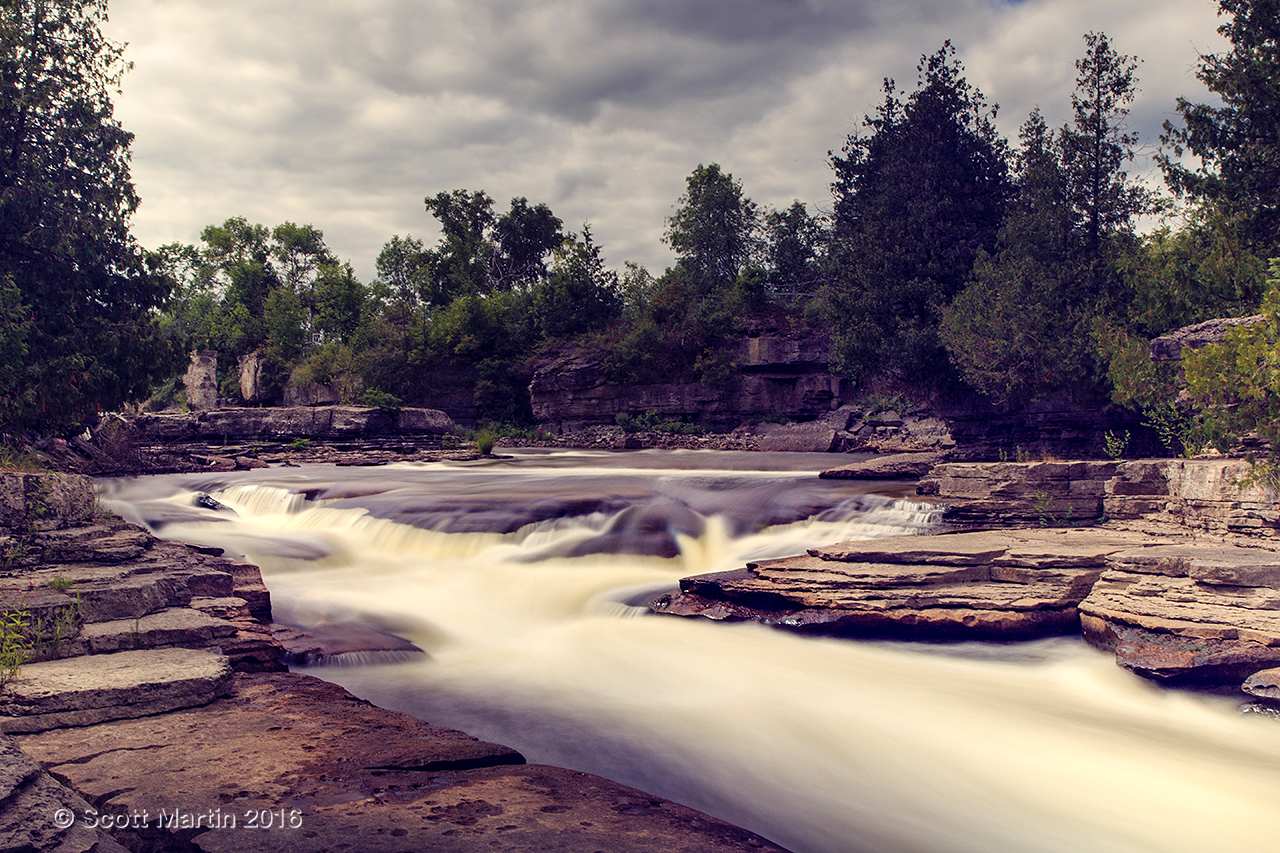
I trust the pictures from this post will encourage you to plan a trip to the Ottawa Valley and include the Bonnechere Caves and the Bonnechere River on your itinerary. It will take about half a day to see them both but if the light is nice you could certainly spend another half day exploring the river in search of that perfect shot.
All of the images in today’s blog were taken with a Canon 5D Mk III and either a 16-35mm or 24-105mm lens using a Gitzo GT1545T traveler tripod and Markins Ball head. More images of our day can be seen in the Bonnechere Caves, Eganville ON gallery.
As always, thanks for taking time to visit the blog. It is much appreciated.

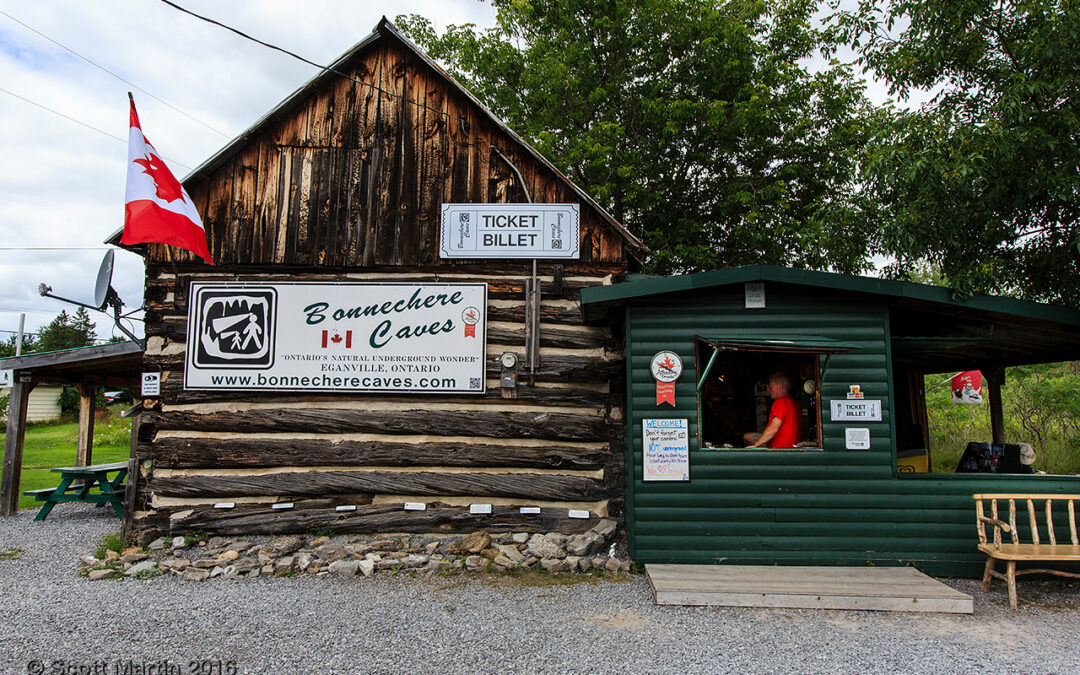
Hi Scott, fantastic photos… I would like to bring my tripod on a tour of the caves. Do they have an official policy? Or is it based on number of tour guests?
If they were accommodating with tripods that would be fantastic!
Hi Don, I inquired at the ticket booth about tripods and they were more than happy to let me take one with me and in fact encouraged me to do so. As always its a bit of a challenge to set up for longer exposures during a tour that is not designed for photography, however I lagged a little behind the tour to avoid getting in the way.
Terrific blog post as always Scott. Experimenting with ND filters is quite fun and I do enjoy it quite a lot.
Thanks Arni and I certainly agree – experimenting with ND filters is a lot of fun, and getting it right makes a huge difference in the resulting image. Your new avatar is terrific too!